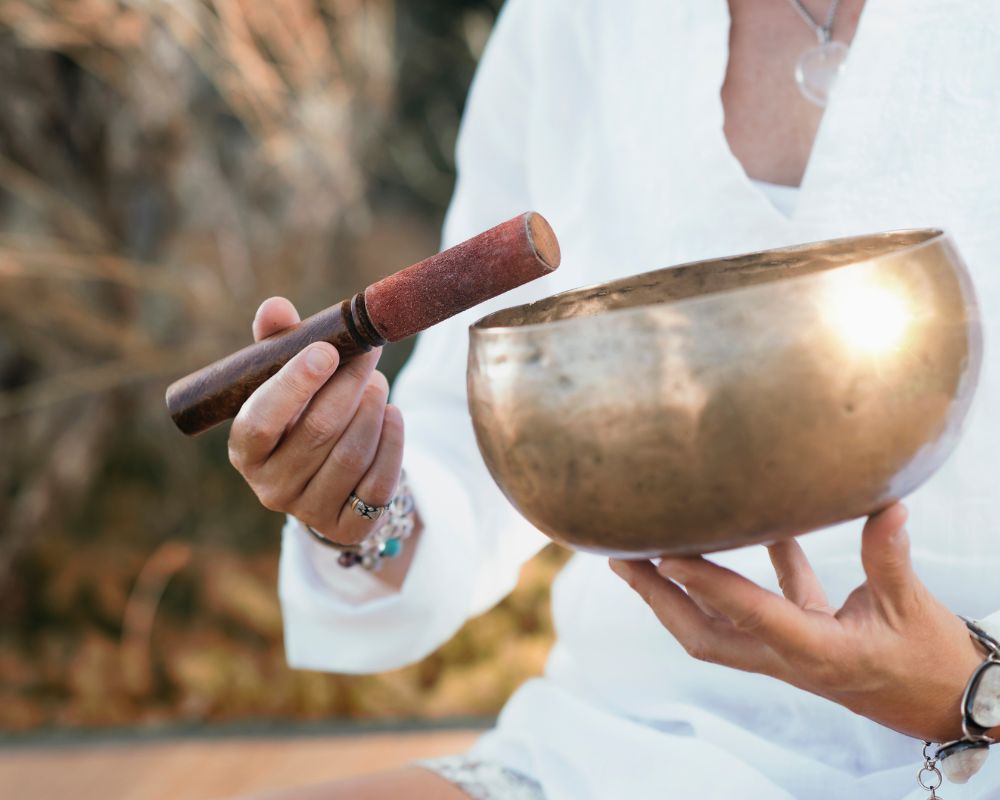Sound healing is an ancient practice that leans into the therapeutic benefits of sound for physical, mental, and spiritual healing. One way to take advantage of it is to attend sound healing retreats. Another option is a group session in your local area. But did you know that you can practice sound healing in daily life?
Sound healing retreats are extremely beneficial. We recommend them to anyone wanting to experience the ancient practice. We also recommend local sessions with sound healing practitioners. As for daily life, implementing some of the more basic practices of sound healing can turn a person’s day-to-day routine into a healing experience.
Sound Healing’s Basic Principles
The concept of sound healing is based on the understanding that both body and mind respond to sounds at different frequencies. And because a variety of frequencies can influence physical and emotional well-being, the sounds we allow into our lives have an enormous impact on how we feel, think, and perceive the world around us.
Ancient practitioners discovered that certain instruments, like singing bowls and tuning forks, evoke a particular response. They discovered how to use instruments to create an immersive sound bath that provides for both physical and spiritual healing. At the core of the sound healing experience is deep relaxation that leads to greater awareness.
Practices for Daily Life
Between those formal sound healing sessions and the healing retreats, anyone can practice basic sound healing principles in daily life. Making daily sound exposure a priority can really help a person tune in to a world that is normally kept at bay by so many modern distractions. When one becomes more aware, one is also more open to healing changes.
Here are just a few of the basic principles anyone can incorporate into daily life:
- Mindful Listening – Mindful listening is the practice of paying attention to all the natural sounds around you. The best way to practice mindful listening is to take some time out to sit, relax, and concentrate on taking in sounds. They should be relaxing sounds – like music or the sounds of nature.
- Self-Expression – Next up is utilizing self-expression to participate in the sound environment. Some people like to sing or hum relaxing melodies. Others like to sing mantras or practice their favorite chants. If you need help deciding how to participate in self-expression, a sound healer can give you guidance.
- Meditation – Setting aside 15-30 minutes to engage in meditation can be immensely helpful. Sessions utilizing recordings of natural sounds, binaural beats, or any other calming frequencies can enhance your openness to healing meditation.
If you are musically inclined, learning to play sound healing instruments can really boost your ability to practice sound healing in your daily life. For example, a tuning fork is a simple instrument you can carry in your pocket. Pulling it out and playing during your twice-daily 10-minute breaks can help relieve stress and make you feel more relaxed.
Enjoy Better Sound Retreats
If you need a reason to motivate yourself to participate in daily sound healing practices, consider this: incorporating sound therapies into your daily life should ultimately lead to enjoying better sound retreats as well. Why? Because you will already be more attuned and self-aware when it is time to attend a retreat.
We absolutely encourage attending sound healing retreats. We encourage participating in local group sessions. But in between both, incorporating sound healing practices into your daily life can make a significant difference. Do not be afraid to ask how during your next retreat or Maloca Sound session.





